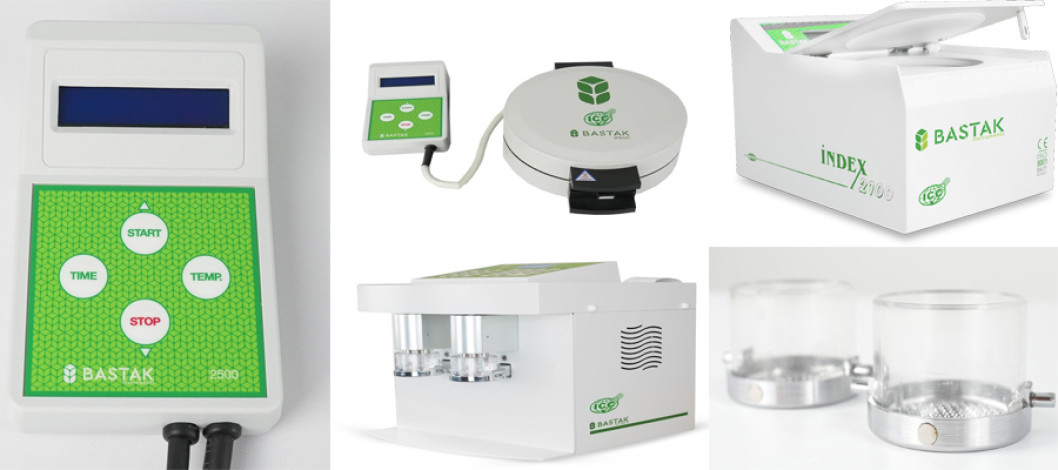
Wheat, one of the cereal crops, which is the most important staple food in our diet, ranks first in the world and in our country in terms of cultivation and production area among plants.
In Turkey, cereals and cereal products are of great importance both in terms of consumption habits and their share in the economy, and our interest in wheat in particular stems from our nature of being the gene centre of Anatolia beyond our traditional eating habits. It has been determined that all wheat has its origin in the Karacadağ foothills near Urfa Göbeklitepe, the first settlement centre in the world. 198 bread and 61 durum registered varieties were identified as of 2016. In 2015, 22.6 million tonnes of wheat, corresponding to 3.3% of world production, was produced and four out of every five farmers in Turkey grow wheat.
Wheat quality is evaluated according to its suitability for the final product and one of the most important quality control criteria is protein content. Gluten, which is the most important component of gluten protein obtained from wheat flour or crushing, constitutes approximately 40% of the endosperm proteins in wheat flour.
Proteins determine many characteristic properties of the dough and gluten, which is hydrated in the mixture of flour and water and forms a network, that spreads to the dough mass. Gluten protein hydration, which plays a role in gaining volume by keeping carbon dioxide bubbles in the dough during fermentation, has a great effect on oxidation.
According to the proportions of gluten in flour; it is classified as very strong, strong, powerful, extensible and weak. Rheological properties of proteins such as hydration capacity, oxidation and elasticity reflect the strength of flour. In this classification, the strength of flour is determined according to the amount and quality of gluten.
Wheat producers want to have the highest wheat yield, while wheat industrialists want to have the highest protein concentration at the lowest possible price.
Bakers want wheat to have a high gluten content; the higher the quantity and quality of gluten, the higher the gas holding capacity and the higher the bread yield and quality.
In the pasta industry, it is desired that minimum dry matter passes into the cooking water and that the pasta does not fall apart and stick during cooking. For this reason, protein quantity and quality of durum wheat is a very important issue.
In the biscuit, pastry and cracker industry; a controlled rising of the products produced is desired. For this reason, it is desired that the protein ratio should be weak and soft at around 10% during the process.
The gluten feature in the total protein in wheat and flour is mainly effective on the rheological and technological properties of the dough and the research is continuing. International standards have been developed for the determination of gluten index value and quality and the gluten index value, which expresses the percentage by weight of the wet core remaining in the sieve after the gluten obtained is subjected to centrifugal force, has an important place in determining the quality.
One of these international standards is the ICC No.192 Standard (International Cereal Science and Technology Association (ICC)) for the determination of wet gluten, gluten index and dry gluten of wheat flour and whole wheat flour using Bastak Instruments' Bastak Quality Control Instruments: 6100 model Gluten Cheq, 2100 model Centrifuge Cheq and 2500 model Dry Cheq.
Bastak Gluten Quality System Instruments are used in thousands of flour, bread, pasta, biscuits, cereal industry manufacturers, universities, research institutes and quality control analysis laboratories worldwide. Bastak Gluten Quality System Devices is an approved world standard for determining the gluten amount, gluten index and dry gluten values in flour and semolina used in bread, pastry, biscuit and pasta by world standards, final product volume, baking and cooking quality.
Wet gluten, gluten index and dry gluten values obtained from flour, whole wheat flour, semolina, bulgur, vital gluten and vermicelli are determined by international standards with the Gluten Quality System. The Gluten Quality System is produced with 0.001-micron precision, the world's highest quality machine park and with the latest technology in Bastak factory with a closed area of 7000 square metres.
In addition, Bastak Teknoloji Systems Company's method study on the determination of 'Falling Number' depending on the Alpha-Amylase Activity level based on viscosity using the Falling Number Cheq device was presented to the world by the International Cereal Science and Technology Association (ICC) with the standard number 189.
-By PhD., Ayşenur Akpınar, Bastak Instruments
Source: Email/GFMM
Comment Now